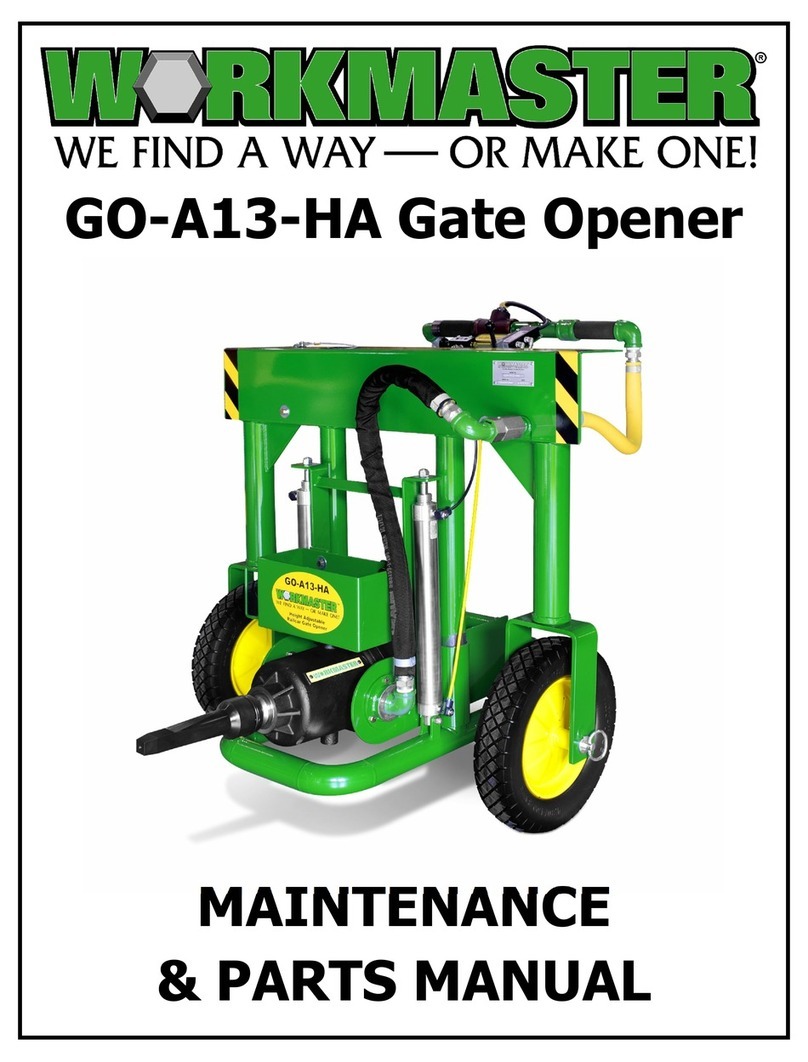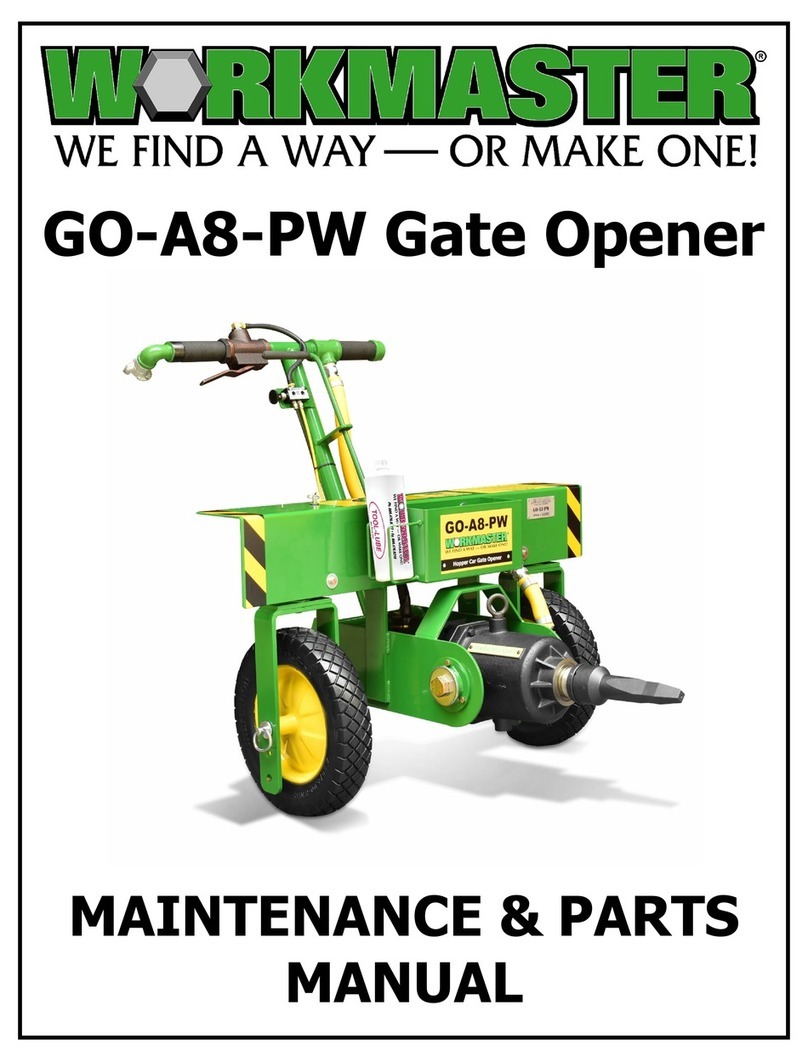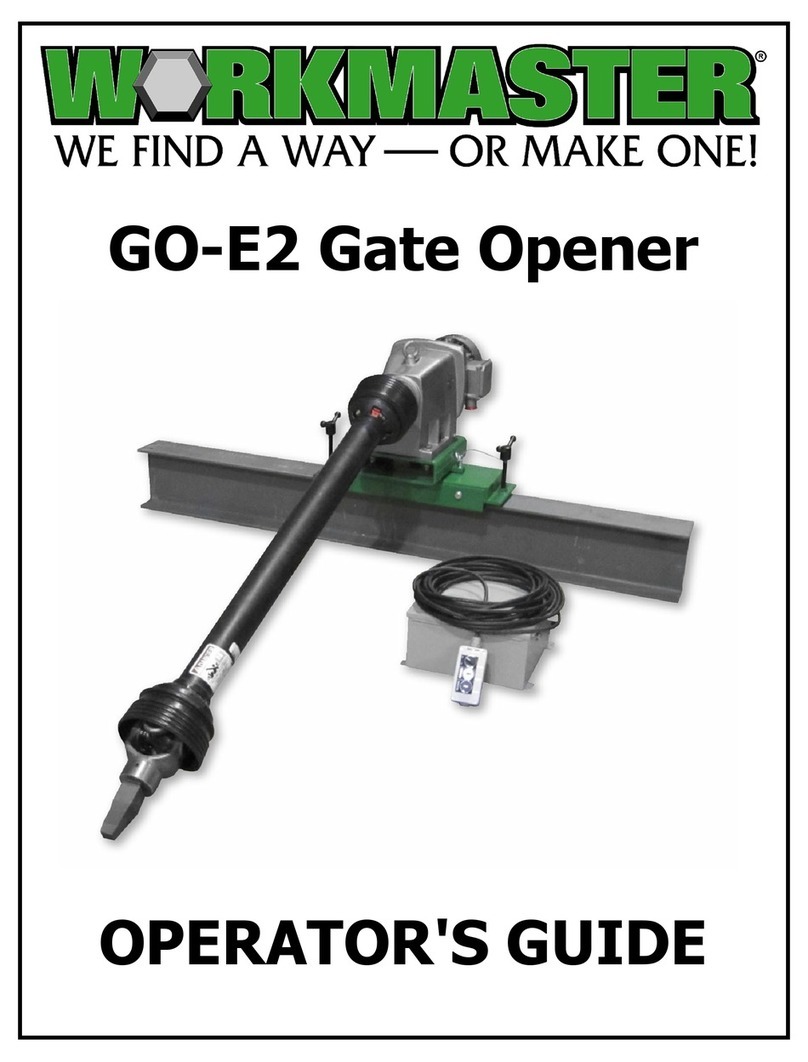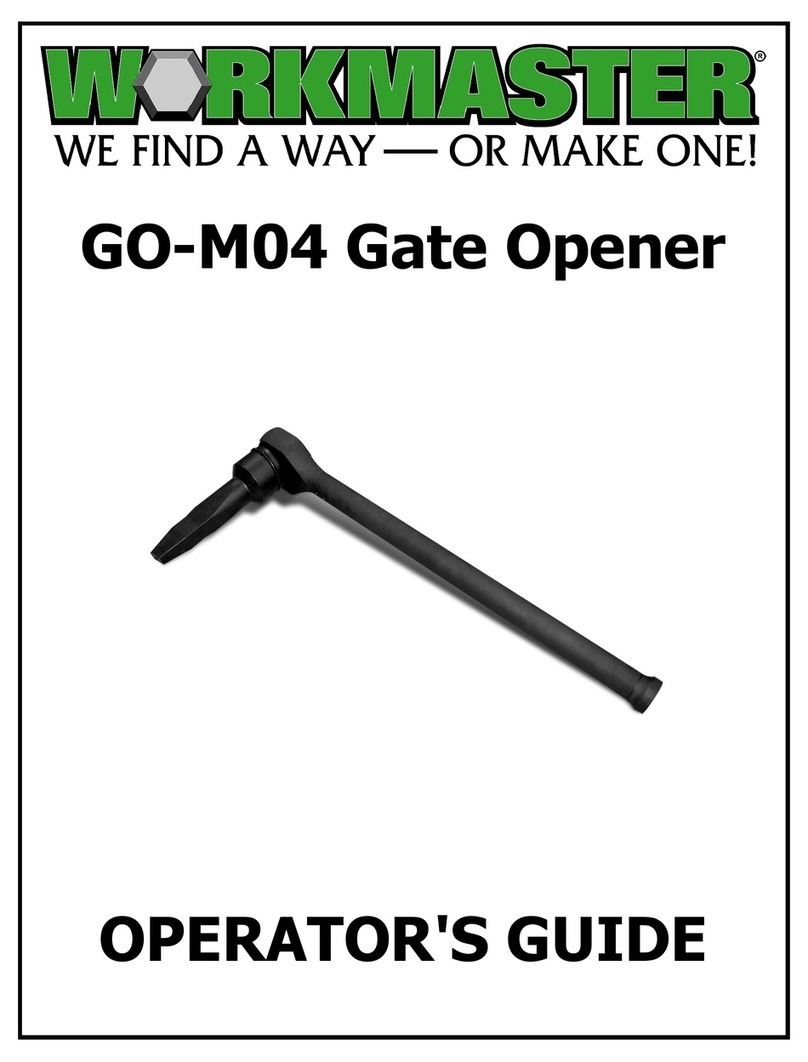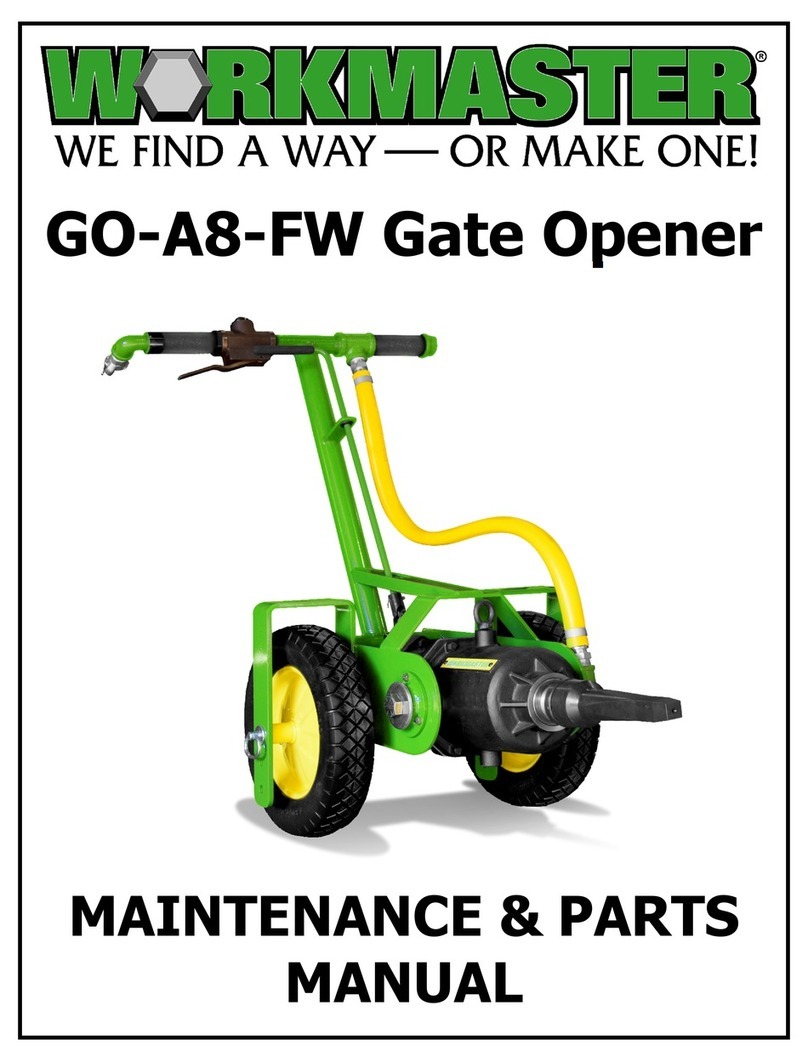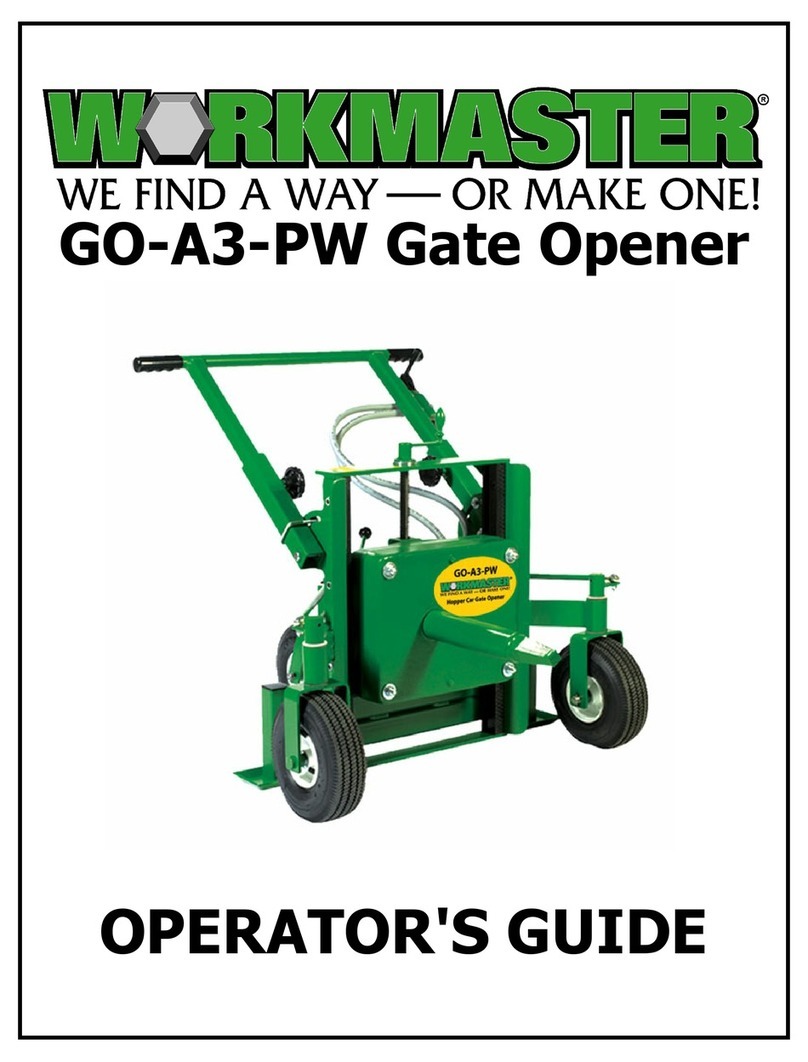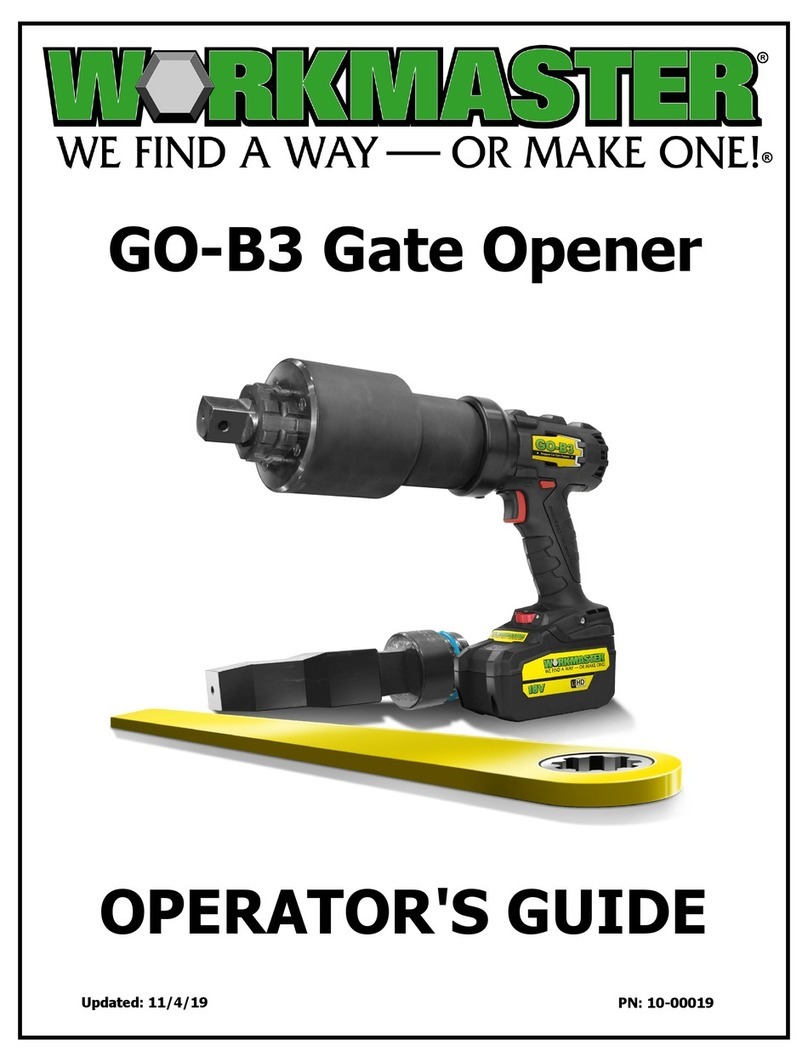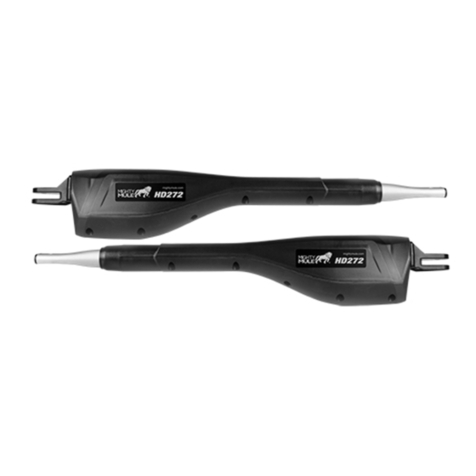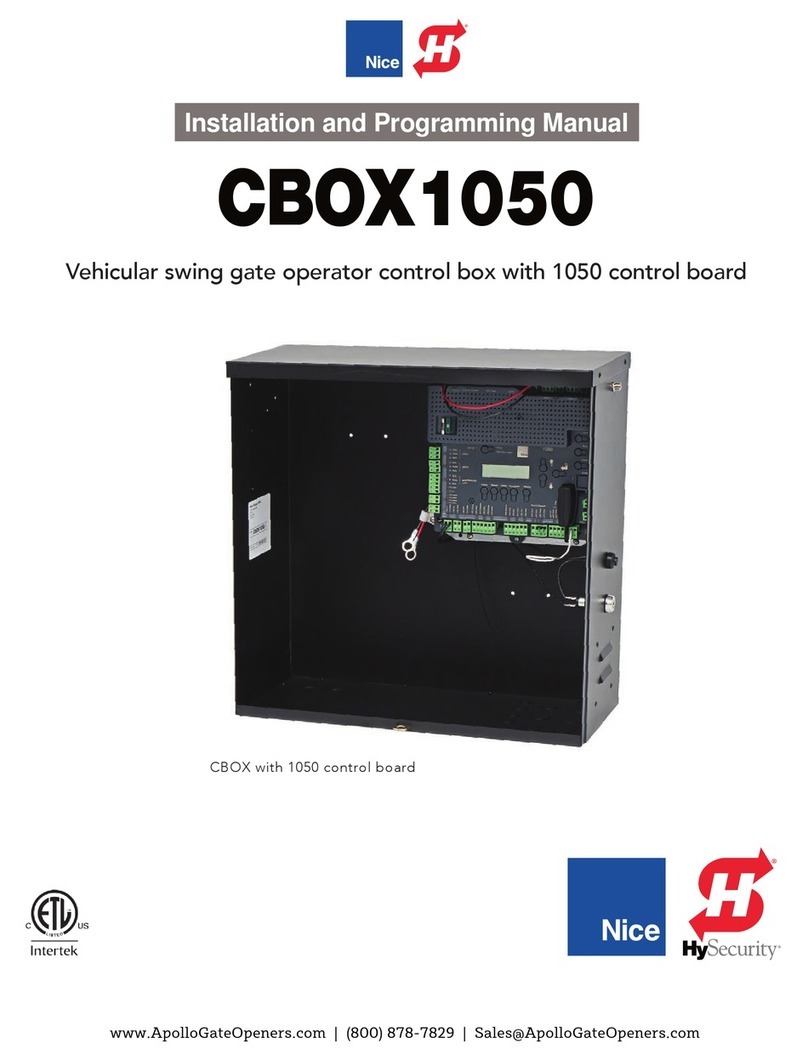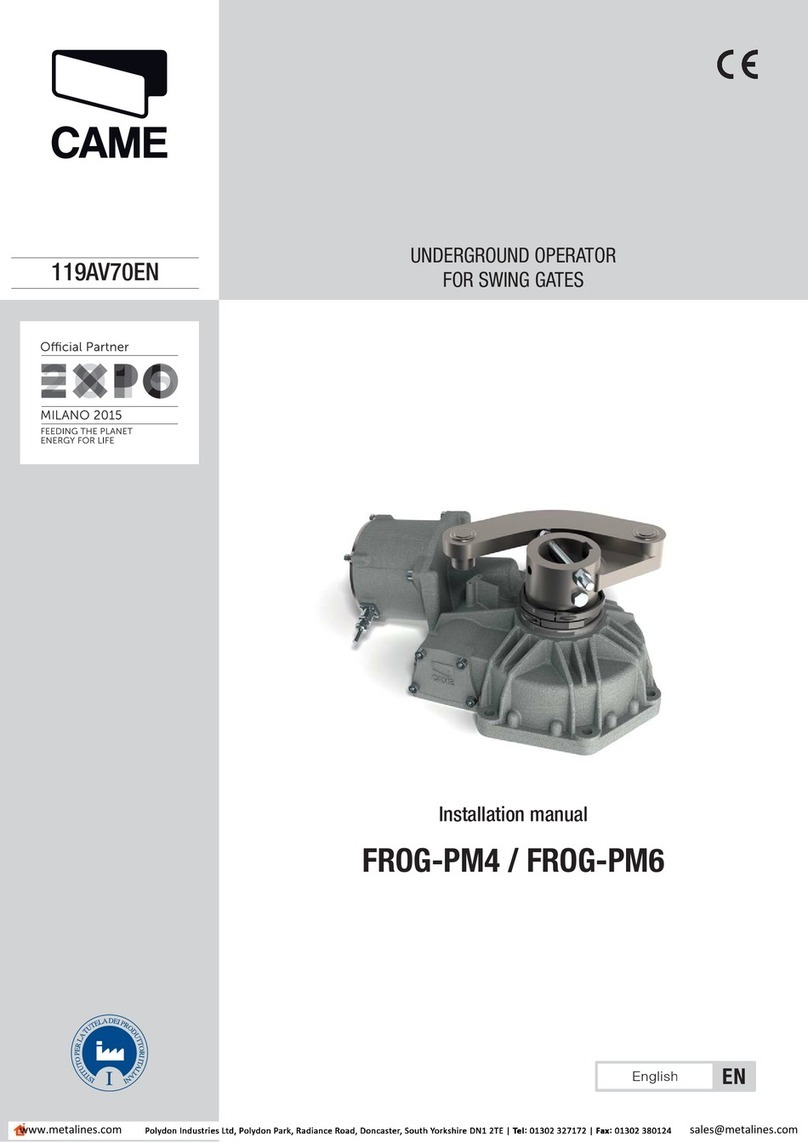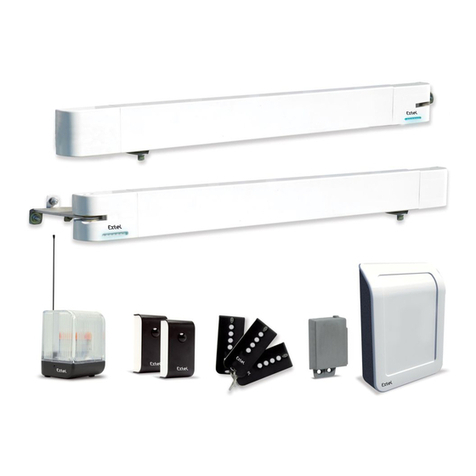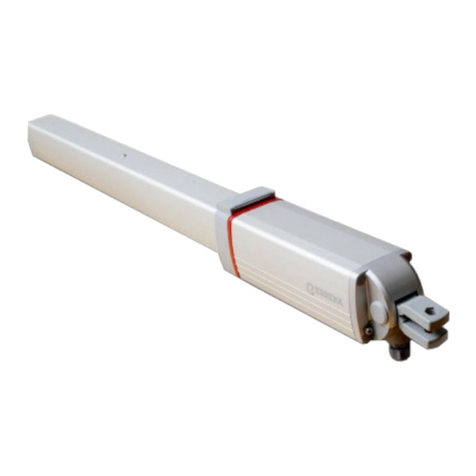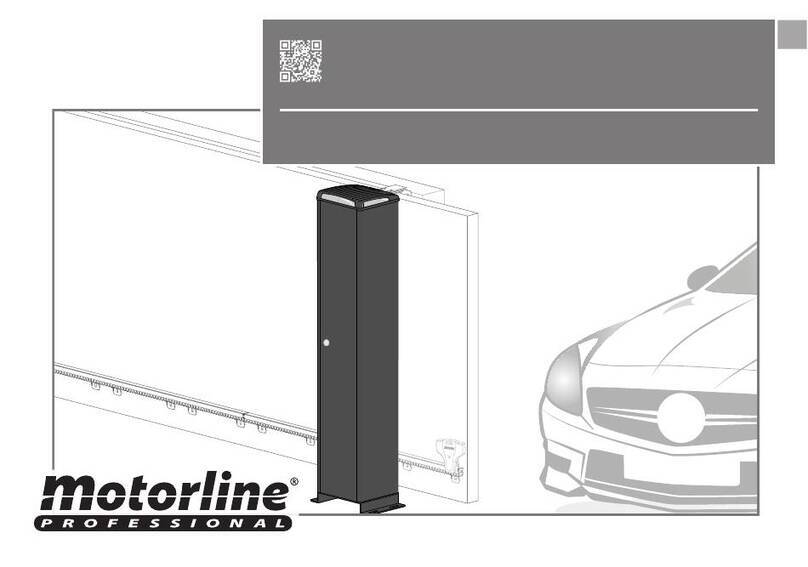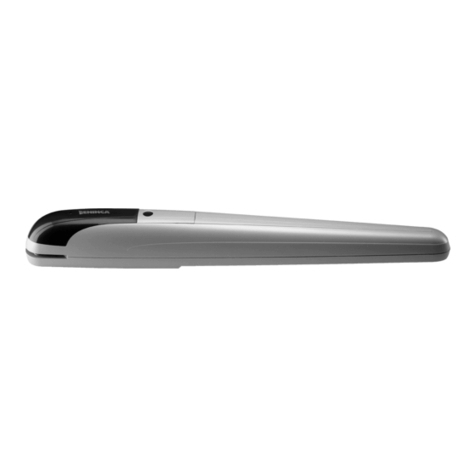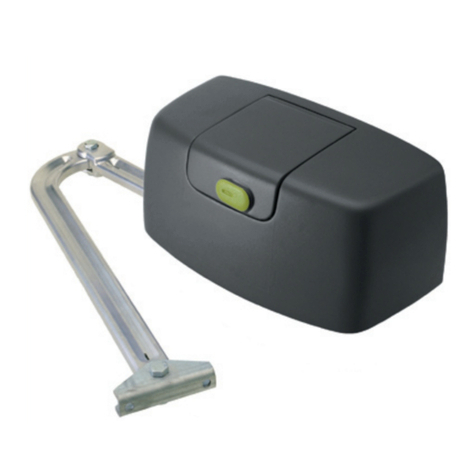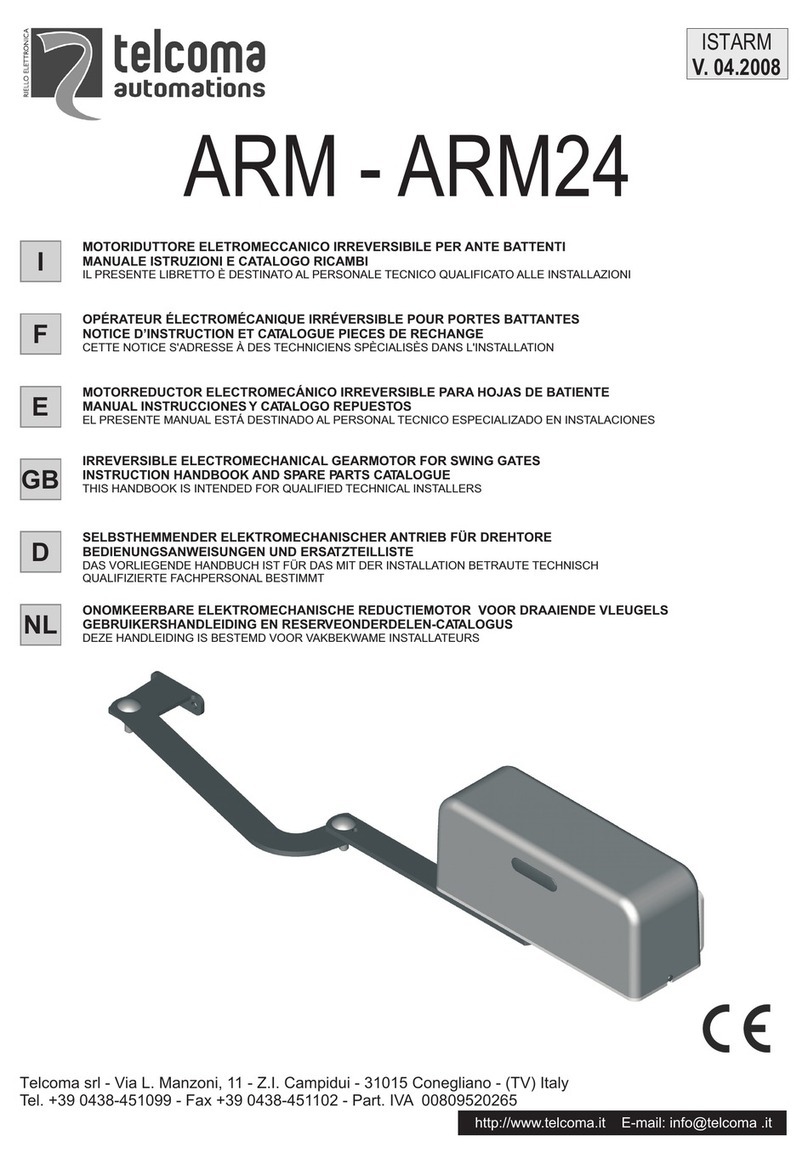
1
I. INTRODUCTION
Fast, safe and economical unloading of covered hopper cars continues to be a
problem at most unloading sites. One of the biggest contributors to this problem
is the often time-consuming and difficult job of opening and closing bottom gates
or doors of these hopper cars. Load compaction, weather conditions, age,
abuse, or corrosive or gritty bulk materials can combine to prevent gate
mechanisms from operating smoothly.
Regardless of cause, the costs associated with the problem are significant.
Delays in emptying the hopper cars means slow car turnaround, increased
demurrage costs, and interrupted production schedules. Even more importantly,
the chance of worker injury is high since at many unloading sites, clumsy or
dangerous makeshift tools are used during the “fight” to open a stubborn gate.
To meet our commitment of “WE FIND A WAY – OR MAKE ONE®”,
WORKMASTER has developed a line of Hopper Car Gate Openers and
accessories which provide a safe, efficient and economical solution to the
problem of opening easy, medium and hard-to-open hopper car gates.
There are pneumatic, electric and manual units available producing 1000 to
13000 ft. lbs. of torque to eliminate the need for "cheater” bars, sledge
hammers, jacks and other improper tools sometimes used on this difficult job.
This Operation/Maintenance Manual details the specifications, operation,
maintenance and safe use of the GO-A8 Pneumatic Hopper Car Gate Opener.
Experience has shown that the GO-A8 Opener will open the most difficult car
gates. However, the same experience demonstrates that total satisfaction in use
depends on attention to detail in operating and maintaining the unit.
ll persons involved in the operation and maintenance
of this equipment should be thoroughly familiar with
the contents of this manual.
IMPORTANT
